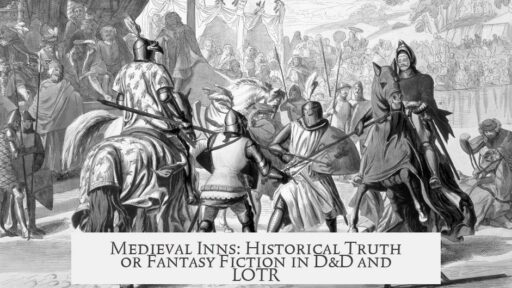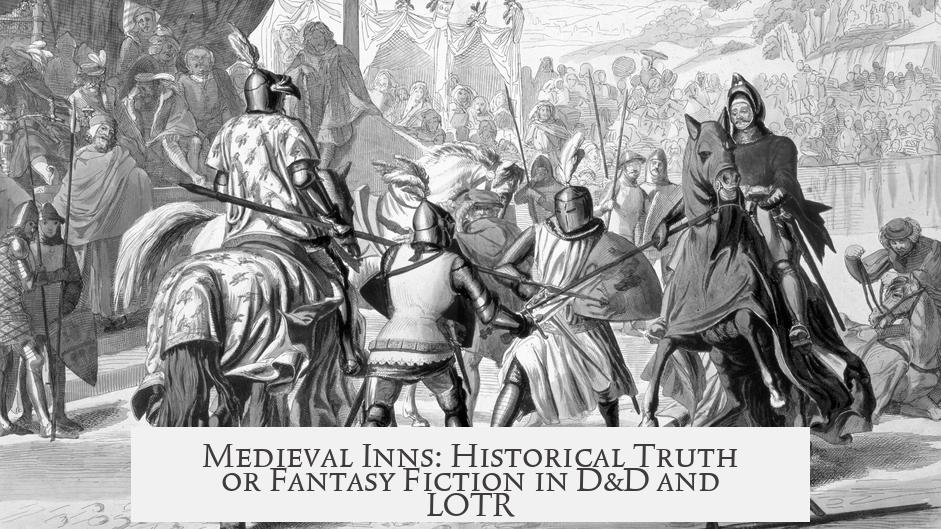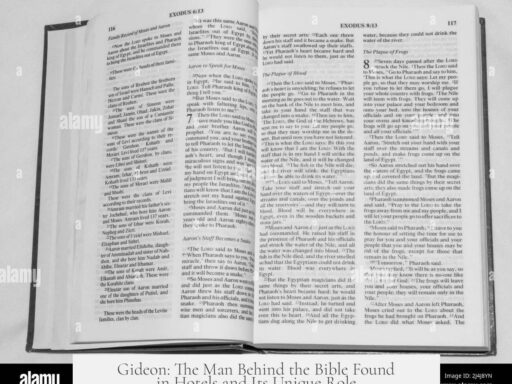Medieval inns were a real and historically documented feature of medieval society, not merely creations of fantasy works such as Dungeons & Dragons (D&D) or The Lord of the Rings (LOTR). They played a significant role in supporting travel, trade, and pilgrimage during the Middle Ages, catering to merchants, pilgrims, and other travelers across Europe and the Mediterranean.
There were various types of medieval inns, each serving different clientele. The larger inns primarily accommodated traveling merchants. These inns featured rooms for lodging, halls for gatherings, and storage spaces for goods and merchandise. The economic function of these inns was closely tied to the commercial activities of merchants who traveled extensively along trade routes.
Another key group of inn patrons during the medieval period was pilgrims. Certain “pilgrim trails” saw inns thrive by meeting the needs of these religious travelers. Pilgrimage inns often provided shelter, food, and spiritual comfort, but they also sometimes developed a reputation for less savory activities.
Inns were frequently viewed as places of “ill repute.” Religious authorities and preachers cautioned against the excessive drinking, gambling, and prostitution that could occur in such establishments. Despite this, inns remained indispensable nodes in the network of medieval travel and commerce.
Terminology related to inns varied by region and function. Merchant inns were sometimes called “fonduks” or “fondacos,” especially around Mediterranean trade hubs. These terms indicated lodgings designed specifically to serve merchants, where they could secure both accommodation and storage for their goods.
In contrast, many inns functioned as private residences where travelers paid to sleep in a spare room or on a couch. This informal hospitality was an accepted social practice, with local homeowners renting out available space to passing travelers as a part of daily medieval life.
Professional hospitality was regulated by medieval laws. These laws distinguished between different types of establishments based on their primary service:
- Taverns provided food and drink but not lodging.
- Inns offered lodging, meals, and drinks, combining multiple services.
Therefore, establishments described as “tavern/inn combos” would be redundant. The medieval understanding of an “inn” encompassed overnight accommodation along with meals and beverages. Even today, many hotels and motels bear signs identifying themselves as inns, continuing the tradition.
The development of inns is distinctly medieval. Before inns became commonplace, travelers often relied on the Church for lodging, particularly monasteries. Monasteries built guesthouses to accommodate outsiders as traffic increased on important routes. These guesthouses were typically located away from the noisy secular world.
Eventually, many of these church-owned lodgings transitioned into commercial inns run by laypeople. In England, inns could traditionally be identified by signs such as the “Angel” or the “Mitre.” These symbols served as recognizable markers for travelers who often could not read.
Besides religious institutions, hospitality also stemmed from Christian lords motivated by piety and conscience. These nobles constructed guesthouses, bridges, and causeways along roads and pilgrimage routes. Their goal was to provide shelter and aid to pilgrims and travelers. Poor visitors sometimes received food and bedding free of charge, while others paid according to their means. Signs such as the “Bear & Ragged Staff” indicated the noble house responsible for these guesthouses.
As commercial travel expanded, especially with the rise of merchant routes, additional inns were established specifically to serve this growing demand. Signs at these inns often referenced commerce and trade, such as the “Chequerboard,” symbolizing accounting tools like the abacus, or the “Sack of Wool,” a reference to a key medieval export commodity.
For readers interested in a thorough academic exploration of medieval hospitality, Olivia Remy Constable’s work Housing the Stranger in the Mediterranean World is an invaluable resource. Though dense and scholarly, it offers deep insights into daily life, travel, commerce, and social interaction across medieval societies.
Historical discussions from expert forums and subreddits like AskHistorians provide additional perspectives and nuances. Contributors point out that inns and the merchants they served receive less attention in typical history classes, despite their central role in medieval economic life.
Key takeaways:
- Medieval inns were genuine, established institutions serving travelers, merchants, and pilgrims.
- Large inns catered particularly to merchants, offering rooms and storage; smaller inns were private homes offering lodging.
- Inns were regulated by law and distinguished from taverns by providing lodging as well as food and drink.
- The Church and monasteries originally provided much lodging before inns became commercial ventures.
- Signs identified inns and related them to either religious or commercial functions.
- Medieval inns sometimes had reputations for vice, but remained essential for travel and trade.
- Scholarship and historical forums demonstrate inns’ real role beyond fantasy portrayals.
Were Medieval Inns Real or the Creation of Fantasy Works Like D&D and LOTR?
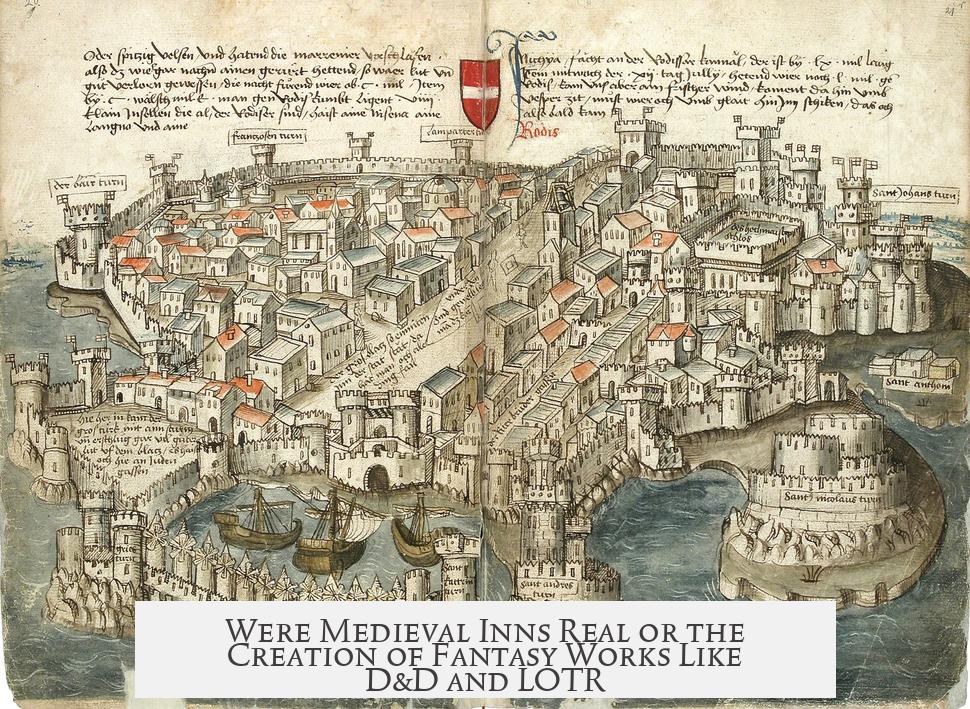
Medieval inns were absolutely real. While fantasy worlds like Dungeons & Dragons and The Lord of the Rings have popularized images of cozy taverns and bustling inns, the concept and existence of inns as places for travelers to rest is rooted deeply in history. These establishments were a distinctly medieval invention and played important roles in everyday life across Europe.
So, no, those stories didn’t just invent inns out of thin air. But what were these inns really like? Were they as charming, rowdy, or even “adventurer-friendly” as the novels and games suggest? Let’s explore the fascinating reality behind the legend.
What Were Medieval Inns Really Like?
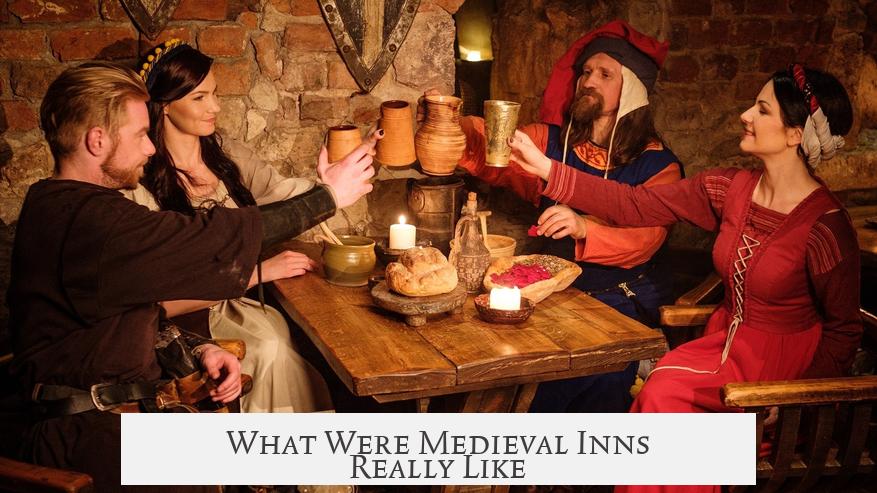
Unlike the fantasy version where heroes and roguish mercenaries trade stories over frothy ale, medieval inns had practical roles—and, well, occasionally sordid reputations. Many larger inns catered primarily to traveling merchants. These merchants needed secure places not only to sleep but also to store their goods, conduct trade, and arrange transport. Thus, inns often had storage rooms and large halls for business dealings—hardly the romanticized alehouses we think of today.
Other inns served pilgrims traveling long distances. Along popular “pilgrim trails,” these inns constituted the bulk of business, offering basic shelter and meals after long, dusty walks. Rather than places of jovial rowdiness, such inns were often utilitarian and sober in purpose.
It’s also important to mention that many inns were actually private homes. The medieval version of Airbnb, if you will. Homeowners rented out spare rooms or couches to passing travelers. This arrangement was an accepted part of daily life. If you ever imagine medieval travelers knocking on random doors looking for a place to crash, you’re onto something.
Were Inns Social Hubs or Den of Ill Repute?
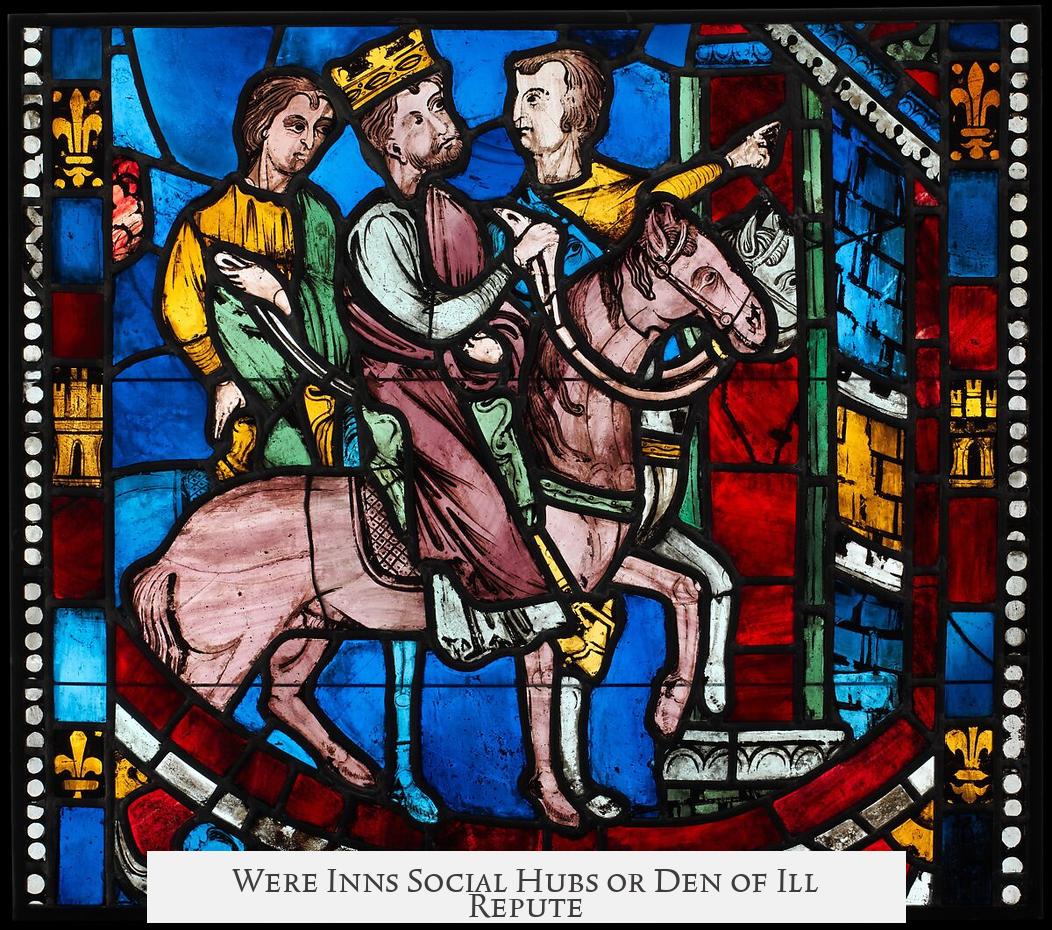
Inns in the Middle Ages earned a somewhat questionable reputation. Religious preachers from all faiths regularly warned common folk to steer clear of inns due to pervasive drinking, gambling, and prostitution. They were indeed places of “ill repute” in the eyes of moral authorities.
This darker side contrasts sharply with the quaint inns of fantasy novels, where every evening ends with laughter and camaraderie. Real medieval inns often balanced between legitimate hospitality and rowdy, sometimes dangerous, behavior.
Wartime Hospitality and the Role of the Church
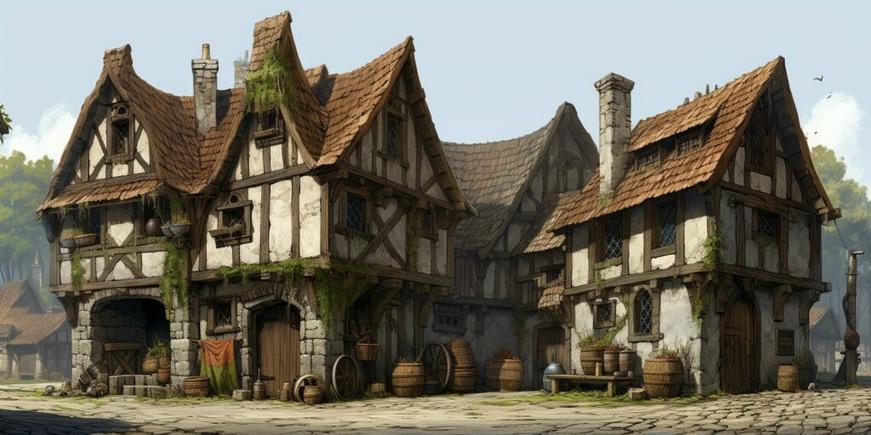
Before inns became staples of medieval travel, lodging for strangers was mainly provided by the Church, especially monasteries. Monasteries built guesthouses away from noisy towns to shield guests from the secular world. These places offered quiet respite to pilgrims and travelers alike.
Over time, these guesthouses transitioned from ecclesiastical to commercial management, becoming the earliest forms of inns. The Church’s role highlights how hospitality bore spiritual significance and was about more than just convenience.
The Signs and Symbols of Inns
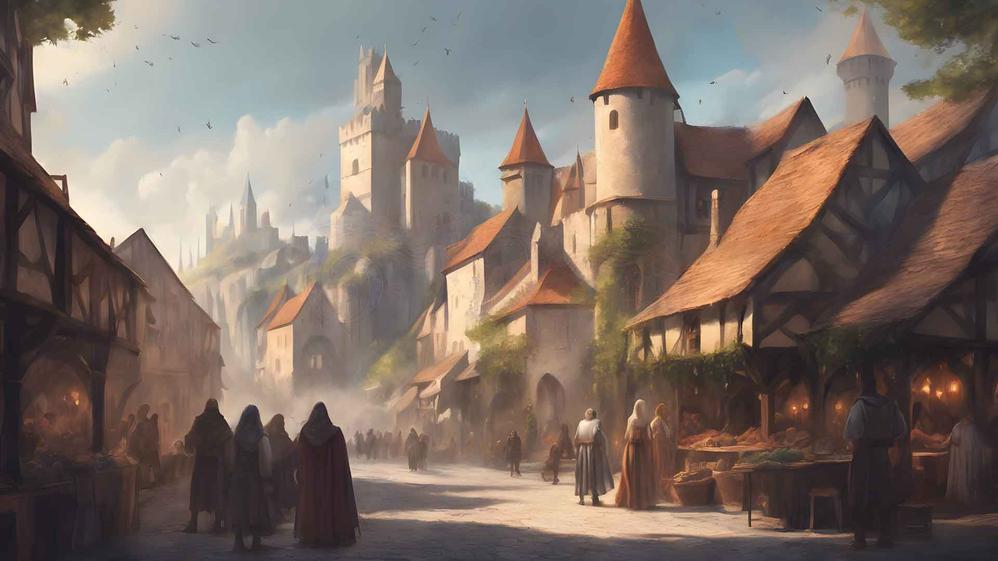
If you ever wander the English countryside and spot signs like the “Angel” or “Mitre,” you are glimpsing centuries-old inn names and symbols. These signs served a practical purpose in a largely illiterate society, helping travelers identify lodging from afar.
Some inns bore noble badges, such as the “Bear & Ragged Staff,” signaling sponsorship by Christian lords who built infrastructure—such as bridges and causeways—to aid pilgrims. Others on merchant trade routes used commercial symbols like the “Chequerboard” or “Sack of Wool,” referencing the practical business done inside.
Taverns vs Inns: What’s the Difference?
Confusing taverns and inns is easy, especially because fantasy tends to blend them together. But medieval laws clearly regulated hospitality services. A tavern primarily served food and drink. An inn provided lodging plus food and drink, making “tavern/inn combos” redundant.
So, that roadside place offering you a bed and some stew? It wasn’t just a tavern; by definition, it was an inn. Next time you stay at a hotel or a motel, peek at the sign on your room door—you’re technically at an inn.
The Rise of Inns with Increased Travel
As trade routes expanded and encouraged more travel, the number of inns increased accordingly. Merchants relied heavily on these inns for rest and storage. Yet, history classrooms often overlook merchants, focusing more on knights and kings. This omission obscures inns’ central role in commerce and daily medieval life.
An academic treasure trove on this topic is Olivia Remy Constable’s work, Housing the Stranger in the Mediterranean World. This dense but fascinating book reveals the intricate social and economic layers surrounding medieval hospitality, providing exhaustive detail on inns’ historical realities and nuances.
So, Were Medieval Inns Real or Fictional?
In sum, medieval inns were very much real. They grew from monastic guesthouses to commercial hubs crucial for pilgrims, merchants, and wandering travelers. The fantasy genre leans heavily on this historical fact, exaggerating the atmosphere and clientele for storytelling purposes.
But the next time you picture a medieval inn filled with singing bards and scheming adventurers, remember they were complex institutions governed by social rules, laws, and a mix of respectable and unsavory activities. Inns represent a vivid slice of medieval life that is both practical and occasionally raucous—far richer than the clichés fantasy worlds offer.
Curious to dive deeper? Explore historical forums like this AskHistorians Reddit thread. Experts discuss how real inn history overlaps and diverges from fantasy tropes, revealing layers both surprising and amusing.
So next time your party gathers ’round the tavern table in your favorite game, tip your tankard to the real medieval inns that inspired this timeless tradition.
Were medieval inns actually real places or just fantasy creations?
Medieval inns were real and documented throughout history. They served travelers like merchants and pilgrims. These establishments provided lodging, meals, and storage for goods.
What kinds of people used medieval inns?
The main guests were traveling merchants and pilgrims. Some inns specifically catered to merchants with storage space, while others served pilgrims along popular routes.
How were inns different from taverns in medieval times?
Taverns offered mainly food and drink. Inns provided lodging in addition to meals. A tavern/inn combination was redundant since inns already included food and drink.
Did medieval society regulate inns or hospitality services?
Yes, medieval laws regulated professional hospitality. Inns were distinct from simple guest rooms in private homes and had rules to manage safety and conduct.
How did medieval inns develop historically?
The Church provided early lodging through monasteries. Over time, these guesthouses turned into commercial inns run by laypeople. Signs like the Angel or the Mitre often identified them.
